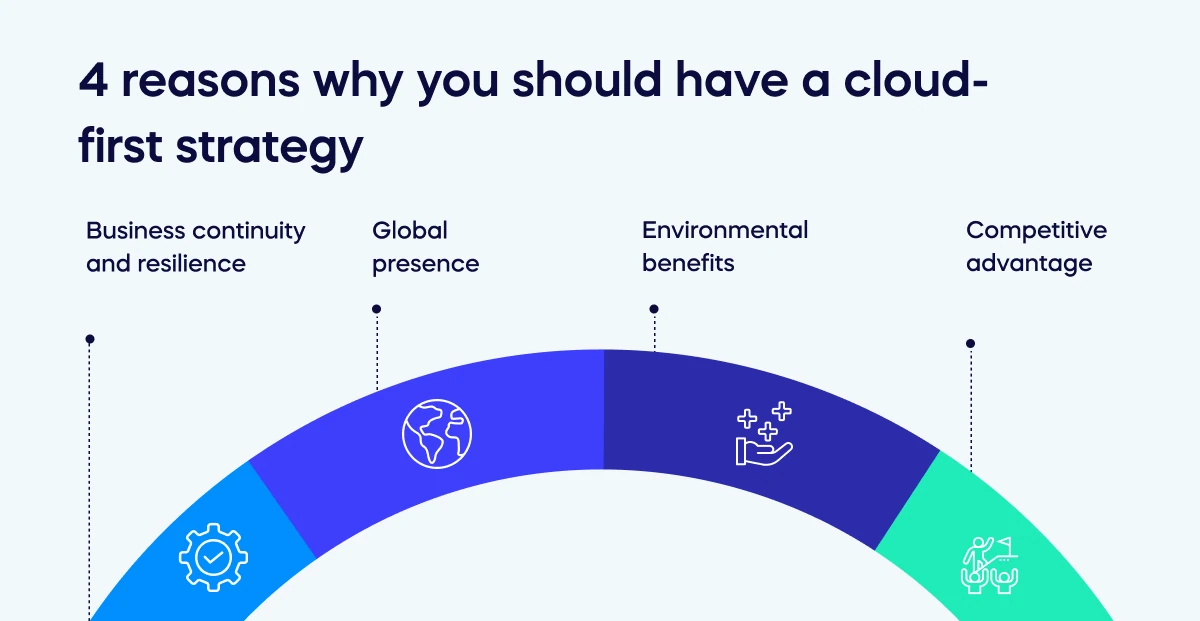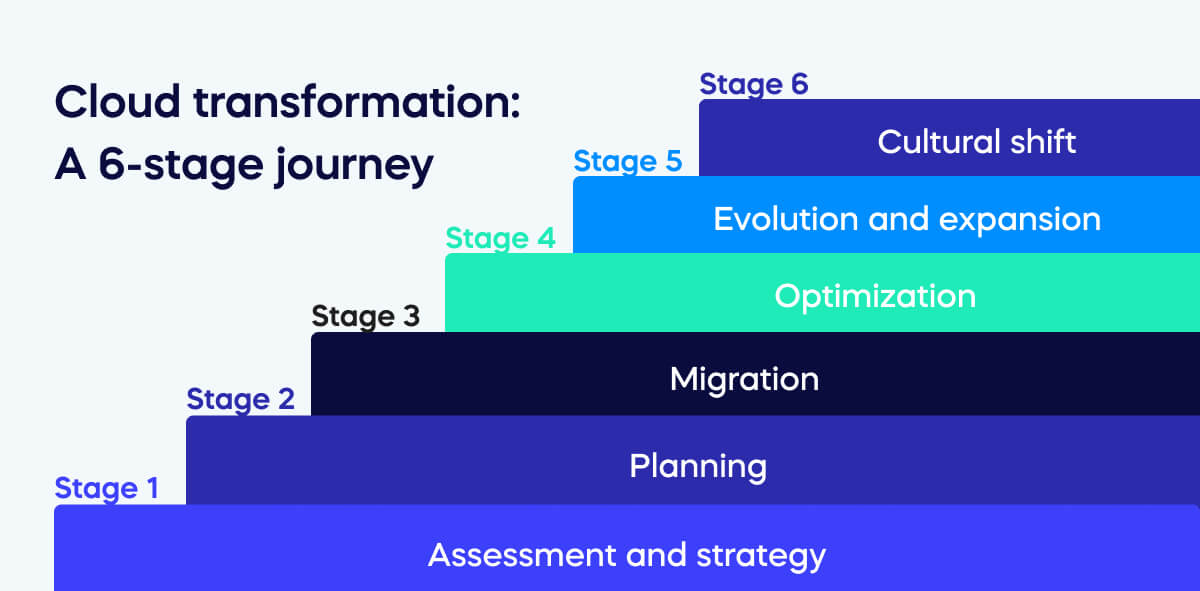What is cloud-based digital transformation?
When you hear the term “cloud-based digital transformation,” you dive into modern business innovation’s heart.
Let’s break it down.
1. Digital transformation:
At its core, digital transformation is using digital technologies to create or modify existing business processes, culture, and customer experiences to meet changing business and market requirements.
It’s about reshaping your business model and strategy to leverage digital tools and thinking.
This transformation is not just about technology; it’s about changing the entire way you conduct business and deliver value to your customers.
2. The cloud:
The cloud refers to servers accessed over the Internet and the software and databases running on those servers.
Instead of buying or leasing physical servers, you rent computing power and storage from a cloud provider, often on a pay-as-you-go basis.
This offers flexibility, scalability, and cost efficiencies that traditional IT infrastructure can’t match.
Merging the two:
When you marry digital transformation with cloud technology, you’re harnessing the immense power and potential of the cloud to fuel and accelerate your transformation journey.
Here are a few reasons why this is a game-changer:

Scalability
With the cloud, you can easily scale your IT resources up or down based on demand.
This means you don’t have to overcommit on infrastructure expenses.
Flexibility
Cloud platforms support a multitude of services and applications.
Whether you want to implement artificial intelligence (AI), data analytics, or the Internet of Things (IoT), the cloud provides the necessary tools to pivot and adapt as your business needs to evolve.
Cost-Efficiency
By moving to the cloud, you can transition from a capital expenditure model (CapEx) to an operational expenditure model (OpEx).
This means you’re paying for what you use rather than sinking money into depreciating assets.
Innovation
Cloud providers regularly roll out new services and features.
As a business leader, this means you always have the latest tools at your fingertips to drive innovation and stay ahead of your competitors.
Collaboration
The cloud enables real-time collaboration.
Your teams can access, edit, and share documents and applications from anywhere, boosting productivity and fostering a culture of collaboration.
Security
Leading cloud providers invest significantly in security.
You enhance your data protection, compliance, and risk management by leveraging their expertise and infrastructure.
4 reasons why you should have a cloud-first strategy
A cloud-first strategy, where businesses prioritize the use of cloud services over traditional IT practices, has gained significant traction among organizations of all sizes.
For forward-thinking business leaders, understanding its benefits is pivotal.
On top of the benefits listed above, here are 4 more benefits of a cloud-first strategy:
Business continuity and resilience:
Cloud services offer effective disaster recovery and backup solutions.
This ensures minimal downtime and data loss in the face of unforeseen events, be it technical failures or natural disasters.
They’re a key element in modern business continuity planning.
Global presence:
By leveraging cloud providers’ vast network of data centers, you can deploy your applications and services close to your target audience, ensuring optimal performance and user experience globally.
Environmental benefits:
Using shared cloud resources can lead to a smaller carbon footprint than maintaining individual, on-premises data centers.
It’s a step towards sustainable and environmentally responsible operations.
Competitive advantage:
A cloud-first approach ensures you are agile, flexible, and always leveraging the best technologies.
This can significantly enhance your market positioning, allowing you to respond to market changes faster than competitors.





